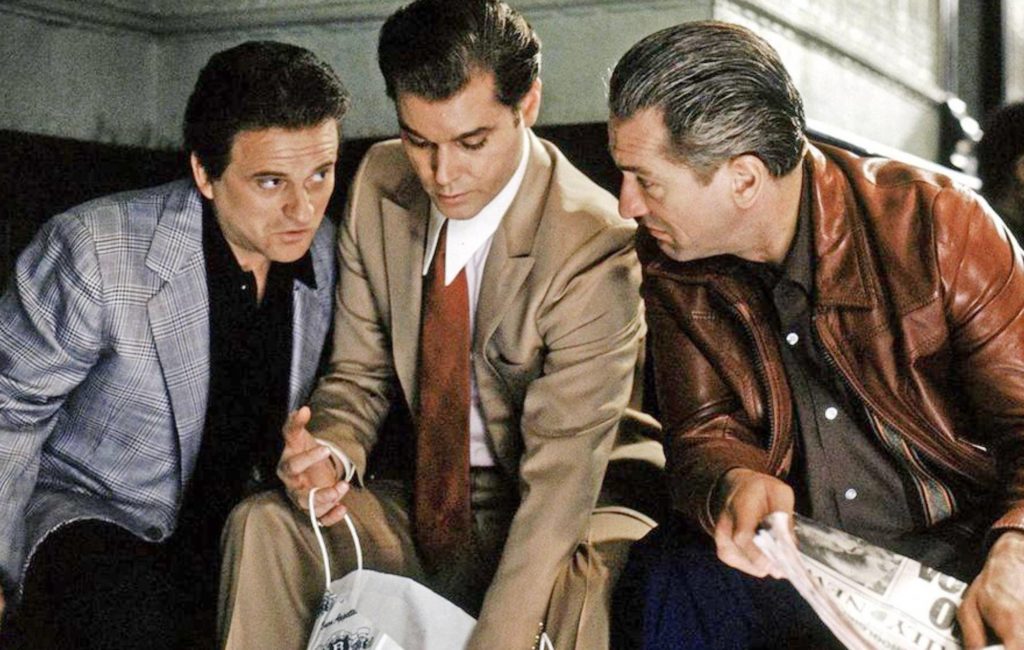
Joe Pesci, Ray Liotta and Robert De Niro in ‘Goodfellas’ (Picture: Pictorial Press Ltd / Alamy Stock Photo)
Christopher Todd is a movie critic for the Samford Crimson. The views expressed in this opinion article do not necessarily reflect the views of the Samford Crimson or Samford University.
This month marks the release of the newest Martin Scorcese’s film, “Killers of the Flower Moon,” a 3.5 hour epic following the Osage murders and the formation of the FBI. To honor the release of another film from one of the all-time great directors, I’ll be reviewing one of my personal favorite films: “Goodfellas.”
Based on the 1985 non-fiction book “Wiseguy” by Nicholas Pileggi, “Goodfellas” has been called the second-best mob film by The Guardian, only beaten by “The Godfather: Part II.” In my opinion, it’s not number two.
“Goodfellas” is a film about the life of Henry Hill, a mobster associated with the Lucchese crime family in New York City. The film spans 25 years, following Hill as he is introduced to the mob lifestyle and his meteoric rise to the top of the game. The cast is as stellar as they come, with hard-hitting performances from Robert De Niro (James Conway), Ray Liotta (Henry Hill), Lorraine Bracco (Karen Hill) and Joe Pesci (Tommy DeVito), who won an Oscar for the role.
Liotta delivers a solid performance as Hill, but the performances of De Niro and Pesci are truly excellent. De Niro plays a suave con man who blossoms into a father figure and mentor to Hill. Pesci plays a spontaneous hothead, and you can’t seem to take your eyes off of what he’s doing on screen. Although these characters are not the people you’d want to be friends with, the actors do a great job of making them likable and giving them complex motivations for joining the mob.
The story, which follows real life events, focuses on themes of morality, ambition and loyalty. Near the beginning of the film, Jimmy Conway gives a young Henry Hill a concise word of advice: “Never rat on your friends and keep your mouth shut.” This suggestion takes Hill a long way, as he becomes one of the most trusted members of the Lucchese crime family. Loyalty in the mafia is a must, and anyone who goes against this code of loyalty knows death might not be far behind.
Scorcese drew from his experiences of growing up on the Lower East Side of Manhattan when directing this film. He wrote the script alongside Pileggi, ensuring that the dialogue would be grounded and natural, reflecting the idiosyncrasies of the speech patterns of New York mobsters at the time. What results is realistic dialogue that isn’t afraid to interrupt and overlap one another.
Because the film spans 25 years, there is a lot of information that has to be condensed down into the 2.5 hour runtime. The pacing is at breakneck speeds, and it never slows down, but it’s done in a way consistent with how Hill would’ve been experiencing life at the time. The gangsters of the time led a cocaine-fueled, fast-paced lifestyle that simply wasn’t sustainable. The film does a perfect job of portraying this, especially in the frenetic, paranoia-driven sequence set to Harry Nilsson’s “Jump Into The Fire.” Scorsese thrives in the soundtrack department, using period music to immerse the viewer in the time period that they’re watching.
Scorsese delivers what is, in my opinion, the definitive mobster film – and yes, I’ve seen the Godfather trilogy. The performances, subject matter and pacing keep you on the edge of your seat the entire film, and you find yourself rooting for the protagonist, even if his actions might be despicable. “Goodfellas” is one of my favorite films, and it’s quintessentially Scorsese. The pacing, the dialogue and the music all make this an incredible viewing experience.
Rating: 9/10
References
Nicholas, P., & Pileggi, N. (1985). Wiseguy. Simon & Schuster.
Pictorial Press Ltd / Alamy Stock Photo. (1989). [Joe Pesci, Ray Liotta and Robert De Niro in ‘Goodfellas’] [Photograph]. ray-liotta-goodfellas.jpg






